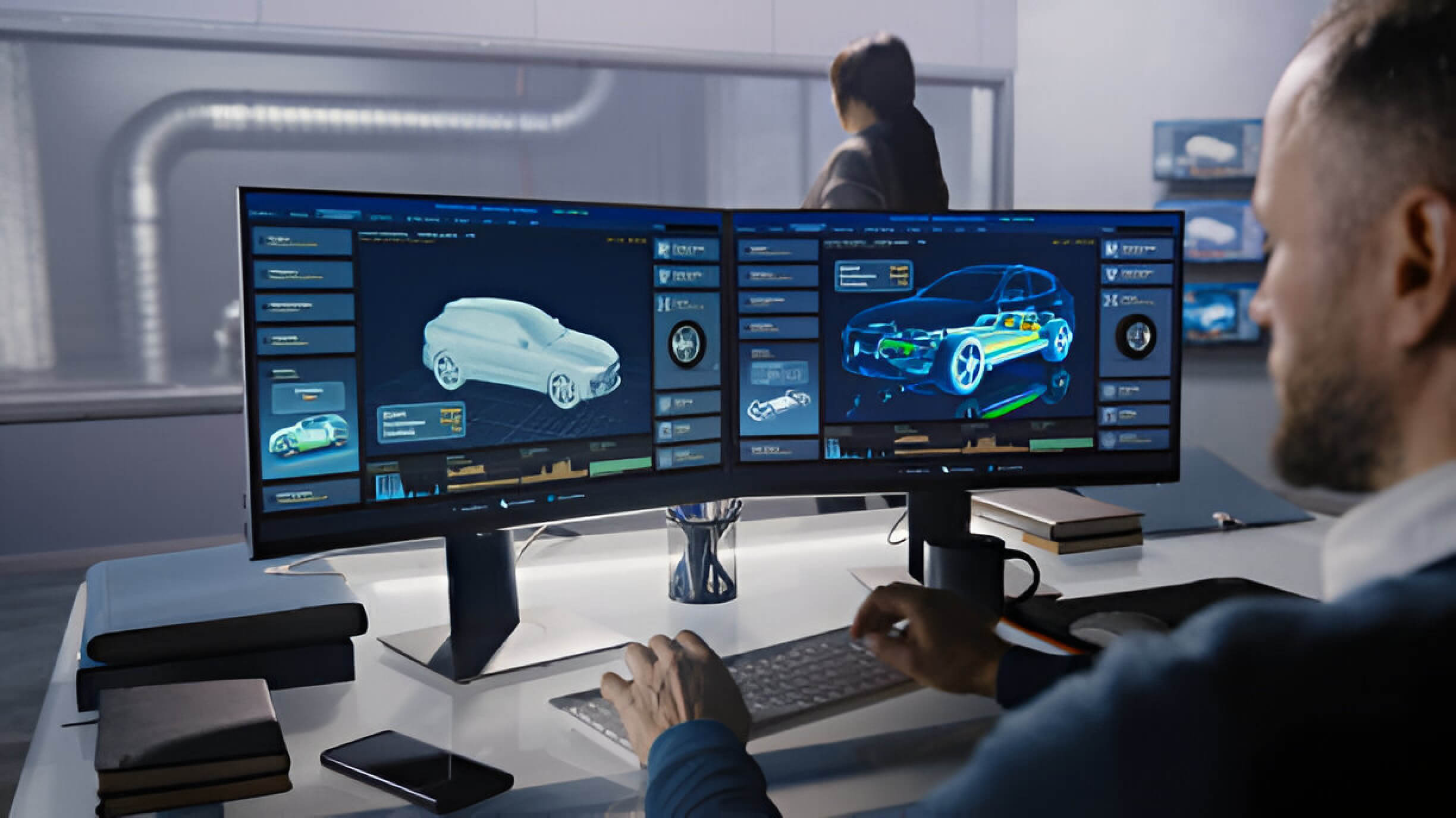In an era of rapid technological progress, Computer Simulation Technology has emerged as a breakthrough tool, revolutionizing the way we understand and interact with complex systems. This powerful approach enables researchers, engineers, and decision makers to explore complex scenarios in virtual environments, pushing the boundaries of what is possible in fields ranging from scientific research to industrial design. By leveraging sophisticated algorithms and advanced computing resources, Computer Simulation Technology offers unprecedented insight into phenomena that were once beyond our reach, paving the way for innovation and discovery across a wide range of scientific disciplines.
Defining Computer Simulation Technology
Computer simulation technology is a powerful tool that enables researchers, engineers, and analysts to create virtual models of real-world systems, processes, or phenomena. At its core, computer simulation involves the use of sophisticated software to digitally replicate complex scenarios, allowing for in-depth study and analysis without the need for physical experimentation.
These virtual models are built using mathematical algorithms and data inputs that closely mimic the behavior of their real-world counterparts. By manipulating variables within the simulation, users can observe potential outcomes and make predictions about system performance under various conditions. This approach is particularly valuable in fields where physical testing may be impractical, costly, or dangerous.
Simulation software has evolved significantly over the years, offering increasingly accurate and detailed representations of everything from weather patterns to manufacturing processes. These digital tools can handle vast amounts of data and perform complex calculations in a fraction of the time it would take to conduct physical experiments.
Computer-based simulations find applications across numerous industries, including aerospace, automotive design, climate science, and healthcare. They allow professionals to test hypotheses, optimize designs, and make informed decisions based on data-driven insights. As technology continues to advance, the role of computer simulation in research, development, and problem-solving is likely to expand even further.
The Evolution of Computer Simulation Technology
Computer simulation technology has come a long way since its inception in the mid-20th century. Early computer models, developed in the 1940s and 1950s, were primarily used for military applications and weather forecasting. These simulations were limited by the computational power available at the time, often taking days or weeks to process relatively simple scenarios.
As technology advanced, so did the capabilities of computer simulations. The 1960s and 1970s saw significant milestones in simulation technology, with the introduction of more sophisticated algorithms and improved hardware. This period marked the beginning of simulations being used in fields such as engineering, physics, and economics.
The advent of personal computers in the 1980s democratized access to simulation technology, allowing researchers and professionals across various disciplines to harness its power. This era also saw the development of more user-friendly interfaces, making simulations more accessible to non-specialists.
In recent decades, technological advancements have led to exponential growth in simulation capabilities. Modern simulation techniques leverage high-performance computing, artificial intelligence, and big data analytics to create increasingly accurate and complex models. These simulations now play crucial roles in fields as diverse as climate science, drug discovery, urban planning, and entertainment.
Today, computer simulations continue to evolve, with virtual and augmented reality technologies opening up new frontiers for immersive simulations. As we look to the future, the integration of quantum computing and advanced AI promises to push the boundaries of what’s possible in computer simulation technology even further.
Key Components of Computer Simulation Systems
Computer simulation systems are complex tools that rely on several key components to accurately represent and analyze real-world scenarios. The foundation of these systems lies in robust simulation hardware, which provides the necessary computational power to process complex calculations and render intricate models. This hardware works in tandem with specialized simulation software, designed to interpret and execute the simulation parameters.
At the core of simulation systems are sophisticated algorithms that govern the behavior and interactions of simulated elements. These algorithms are crucial in ensuring the accuracy and reliability of the simulation results. Data input serves as the fuel for these systems, providing the necessary information to initialize and guide the simulation process. This data can come from various sources, including real-world measurements, historical records, or theoretical models.
Model development is another critical aspect of simulation systems. It involves creating a simplified representation of the real-world system being studied, incorporating relevant variables and relationships. The accuracy and usefulness of a simulation largely depend on the quality of the underlying model.
Finally, output visualization plays a vital role in making simulation results accessible and understandable. Advanced visualization techniques allow researchers and analysts to interpret complex data sets, identify patterns, and draw meaningful conclusions from the simulations. This component bridges the gap between raw data and actionable insights, making it an essential part of any comprehensive simulation system.
Types of Computer Simulations
Computer simulations have become an invaluable tool in various fields, offering insights into complex systems and phenomena. There are several types of computer simulations, each suited to different applications and research needs.
Discrete-event simulation is widely used in manufacturing, logistics, and service industries. It models systems as a series of distinct events occurring over time, allowing for the analysis of queuing systems and resource allocation.
Agent-based modeling focuses on individual entities, or “agents,” and their interactions within a system. This approach is particularly useful in social sciences, ecology, and economics, where understanding emergent behaviors is crucial.
System dynamics simulations are employed to study complex systems with feedback loops and time delays. This method is often applied in business strategy, urban planning, and environmental studies to forecast long-term trends and policy impacts.
Monte Carlo simulation uses repeated random sampling to solve problems that might be deterministic in principle. It’s commonly used in finance, physics, and engineering to assess risk and uncertainty in various scenarios.
Continuous simulation models systems where variables change continuously over time, often using differential equations. This type is prevalent in physics, chemistry, and engineering for studying phenomena like fluid dynamics or chemical reactions.
Each type of simulation offers unique advantages, and researchers often combine multiple approaches to gain comprehensive insights into complex systems and processes.
Applications of Computer Simulation Technology
Computer simulation technology has revolutionized numerous fields, offering powerful tools for analysis, prediction, and decision-making. In scientific research, simulations enable scientists to model complex systems and test hypotheses without the need for costly physical experiments. Engineering design benefits greatly from simulations, allowing engineers to prototype and refine products virtually before manufacturing.
Weather forecasting has been transformed by advanced simulation models, improving accuracy and extending prediction timelines. In the financial sector, simulations are crucial for risk assessment, market analysis, and portfolio optimization. Urban planners utilize simulations to model traffic flow, population growth, and infrastructure development, leading to more efficient and sustainable city designs.
Healthcare simulations have become invaluable for medical training, drug development, and understanding disease progression. These virtual environments provide safe spaces for medical professionals to practice procedures and test treatment strategies. As simulation technology continues to advance, its applications are likely to expand, offering new insights and solutions across diverse industries.
Benefits and Limitations of Computer Simulation
Computer simulation offers numerous advantages in various fields, from engineering to economics. One of the primary benefits is cost-effective testing, allowing researchers and developers to evaluate complex systems without the need for expensive physical prototypes. This leads to significant savings in both time and resources.
Risk-free experimentation is another key advantage. Simulations provide a safe environment to test potentially dangerous scenarios or explore extreme conditions without putting people or equipment in harm’s way. This is particularly valuable in fields like aerospace, nuclear engineering, and disaster management.
Time compression is a unique feature of computer simulations. Processes that might take years or even decades in the real world can be simulated in a matter of hours or days, enabling rapid iteration and long-term forecasting.
Scalability is also a notable benefit. Simulations can be easily adjusted to model systems of varying sizes and complexities, from molecular interactions to global climate patterns.
However, computer simulations do have limitations. Model accuracy is a constant concern, as simulations are only as good as the data and assumptions they’re based on. Inaccurate or incomplete input can lead to misleading results.
Computational limitations can also pose challenges. Some complex simulations require enormous processing power, which can be costly and time-consuming. As systems become more intricate, the computational demands increase exponentially.
Despite these limitations, the benefits of computer simulation continue to drive innovation and research across numerous disciplines, making it an invaluable tool in modern science and engineering.
The Future of Computer Simulation Technology

The future of computer simulation technology is poised for groundbreaking advancements, driven by the convergence of several cutting-edge technologies. AI integration is set to revolutionize simulation capabilities, enabling more accurate predictions and complex scenario modeling. This synergy will lead to smarter, more adaptive simulations that can learn and evolve in real-time.
Quantum computing simulations are on the horizon, promising to tackle previously unsolvable problems and simulate intricate systems with unprecedented accuracy. This leap in computing power will open new frontiers in fields such as drug discovery, climate modeling, and materials science.
Virtual reality simulations are becoming increasingly sophisticated, blurring the lines between the digital and physical worlds. These immersive experiences will find applications in training, education, and entertainment, offering unparalleled realism and interactivity.
Real-time simulations are evolving to handle more complex scenarios with minimal latency. This advancement will be crucial in areas like autonomous vehicle testing, financial modeling, and urban planning, where instant feedback and decision-making are essential.
Cloud-based simulation platforms are democratizing access to powerful simulation tools. By leveraging distributed computing resources, these platforms will enable collaboration on a global scale and provide on-demand access to high-performance simulation capabilities for businesses and researchers alike.
As these technologies continue to evolve and intersect, we can expect computer simulations to play an even more significant role in shaping our understanding of the world and driving innovation across industries.
Ethical Considerations in Computer Simulation
Ethical considerations play a crucial role in the development and application of computer simulations. As these powerful tools become increasingly sophisticated, it’s essential to address potential ethical challenges to ensure responsible use and minimize negative societal impacts.
One primary concern is data privacy. Simulations often require vast amounts of data, which may include sensitive personal information. Researchers and developers must implement robust safeguards to protect individual privacy and comply with data protection regulations.
Simulation bias is another critical issue. The algorithms and data used to create simulations can inadvertently perpetuate existing biases, leading to skewed results and potentially unfair outcomes. It’s vital to regularly assess and mitigate these biases to ensure the accuracy and fairness of simulation-based decisions.
Responsible use of computer simulations involves careful consideration of their potential consequences. Developers and users must engage in ethical decision-making processes, weighing the benefits against possible risks and unintended effects on individuals and communities.
The societal impacts of computer simulations can be far-reaching, influencing fields such as urban planning, climate modeling, and healthcare. It’s crucial to involve diverse stakeholders in the development and implementation of simulations to ensure a comprehensive understanding of potential ethical implications.
By addressing these ethical considerations, we can harness the power of computer simulations while minimizing risks and promoting positive outcomes for society as a whole.










